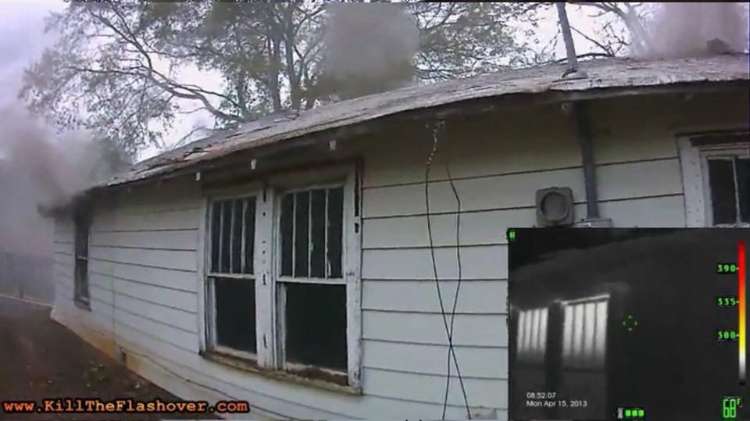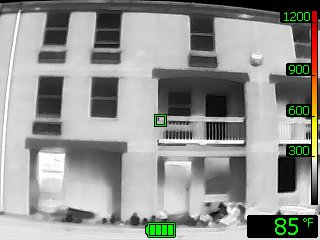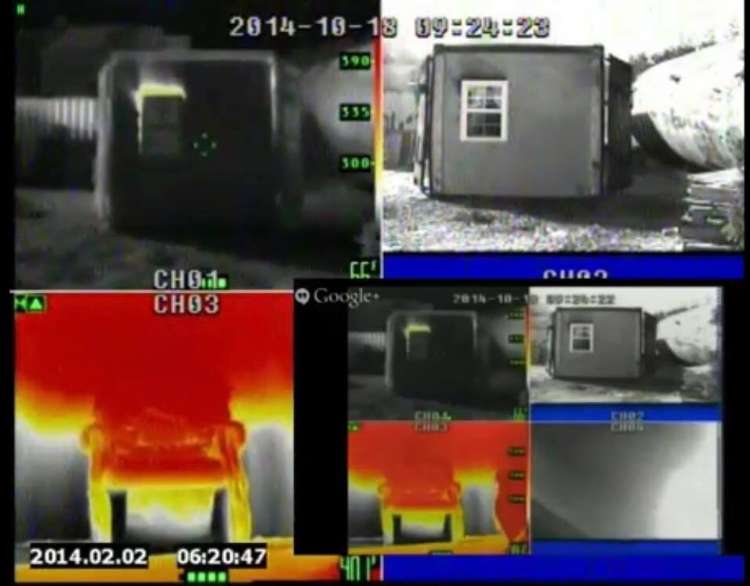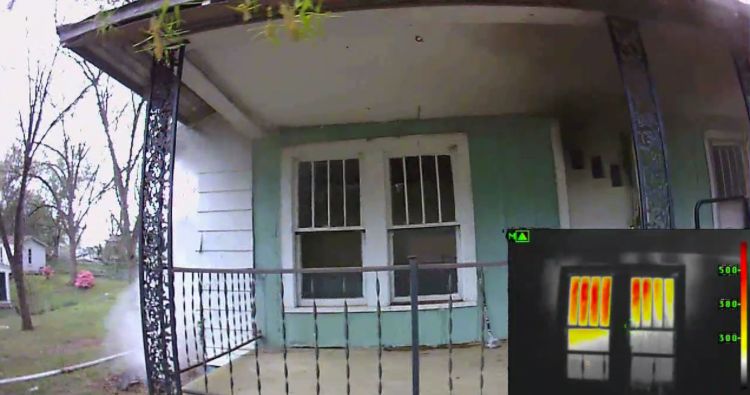TIC’s can’t see through glass?
They actually can’t see through anything but you’d be amazed what you can see!
Check out our Blog Post-Overcoming Thermal Imaging Camera limitations:
Firefighters are taught that thermal imaging cameras cannot see through glass and this is technically correct.
But, have we considered the following:
- Depending on the type of glass, IR energy can be transmitted through single pane leaded glass or automotive glass with high metal contents.

- The materials that frame the glass emit/absorb heat thereby can produce a noticeable heat signature known as thermal bridging.
- The caulk and insulation around the openings (windows and doors) are highly flammable and fail quickly under fire conditions producing a heat signature
- Older windows (late 1800’s to early 1900’s) allow Infrared Energy to pass though thereby allowing firefighters a view of the heat within that compartment (such as the photo above)
- Newer Low Emissivity Energy Efficient Windows May not show any heat indicators but the glass will appear cloudy through the TIC as heat is heating the inert gases within the double paned panels (such as the photo below)

Therefore, Glass within a window is typically framed by wood, vinyl, or metal all of which will show a thermal signature under severe enough heat. Also these windows are sealed by adhesive and insulation which tend to fail under fire thereby allowing heat to escape which also produces a visible contrast/thermal clue to the TIC user that should serve as an indication for further investigation.
Project Kill the Flashover has documented in numerous tests an obvious thermal signature on the top of the window of the room of origin in a fire with no other signs of a fire.
This thermal clue was viable on the top of the window when the TIC was showing a direct temperature measurement of 67 degrees. Inside that room was a post flash-over fire burning at 1100 degrees Fahrenheit!

The TIC user should be trained to understand the entire palette or read the big picture and not merely read the DTM (spot Temperature) or focal point temperature which is typically only a 12 inch circle of measurement. When dealing with reflective surfaces, they are what are known as low emissivity (highly reflective) objects therefore the temperature measurement will NOT be accurate. However, if the firefighter can read the palette and interpret the image correctly, this can be extremely helpful during size-up, vent enter search, and more.
Read the mode, Read the palette, know the resolution, stand within the optimal distance for the camera to work efficiently and make an informed decision. Tactical Thermal Imaging is adapting techniques used in thermography applications to the fire service to our advantage.
Stay Intelligently Aggressive!
Instructor Andy Starnes
Insight Training LLC
Level II Thermography Certified

